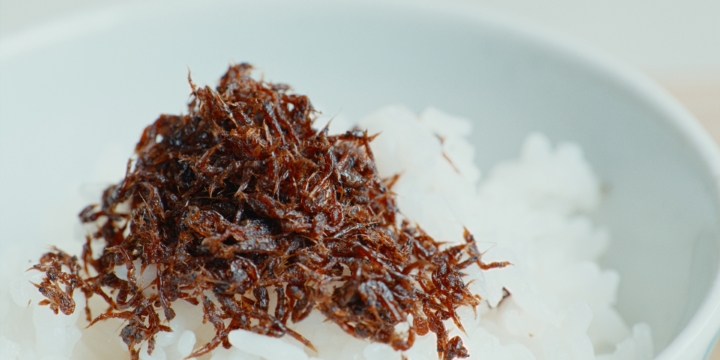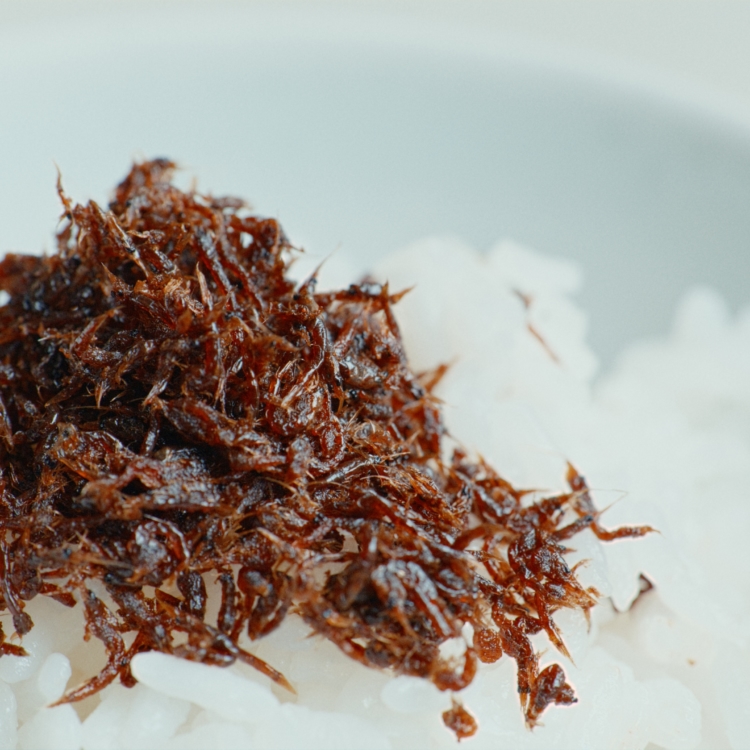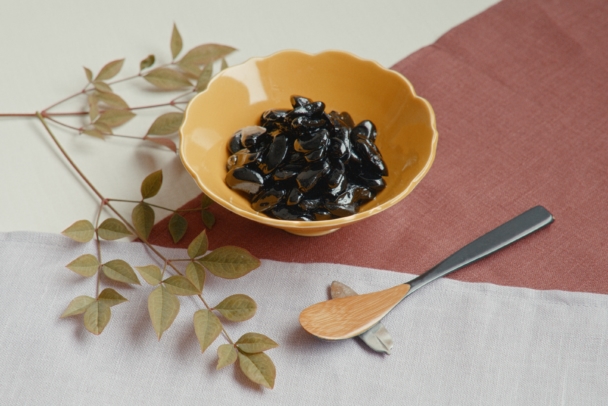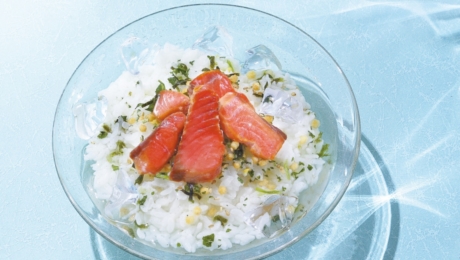

Tsukudani, a Traditional Dish in Constant Evolution
The origins oftsukudanidate back to the early Edo period, when, as the story goes, fishermen living in Tsukudajima, located at the mouth of the Sumida River, began cooking small fish caught in Edo Bay to preserve them. The product, named after Tsukudajima, was transformed into a popular Edo souvenir by Shichibei, the third-generation owner of Shinbashi Tamakiya.
Shinbashi Tamakiya was founded in 1782 by the first-generation Shichibei, who hailed from Echigo (present-day Niigata, minus Sado Island), in what is now Tokyo’s Shinbashi. At the time, their main product waszazen mame,or black soybeans simmered in sugar and soy sauce according to a family recipe. The third-generation Shichibei innovated thetsukudani-making process, perfecting their taste, aroma, and luster to create what is known as Edotsukudani.Soon, Shinbashi Tamakiya became known for both itszazen mameandtsukudani,each remaining just as popular to this day.
Tsukudanicome in numerous variations, from smallamishrimp, clam, and tuna to shiitake mushroom. The secret to their rich flavor and umami lies in the use of a special sauce, continually replenished as it is used to cook each ingredient. It is said that Albert Einstein, during his visit to Japan in 1922, was particularly fond of Shinbashi Tamakiya’s shredded kombu version. Amongst their offerings are both traditional richly flavoredtsukudaniand a modern, low-sodiumshiro tsukudaniline, whose mild flavor has made it popular among women and newcomers to the dish. Shinbashi Tamakiya’s website also features recipes demonstrating how to usetsukudanifor meals such as mixed rice and salads, helping to attract new fans.
Moreover, Shinbashi Tamakiya are committed to developing new products that challengetsukudani’s conventional image. Their innovations include a soft type offurikake(dry condiment) calledtsukudani furikakeas well as an entire World Furikake series featuring international flavors such as green curry and Italian tomato. Their authentic taste has made them into a major hit, notably among overseas customers and vegetarians. Recently, to promotetsukudani’s worldwide appeal, products to pair wine have also been introduced. At Shinbashi Tamakiya’s main store, there is even a dining counter where Western-style original dishes, such as “Ami Butter” (smallamishrimptsukudaniwith butter and lemon juice) and “shrimptsukudaniwith caramelized nuts,” are served up to great acclaim, consequently leading to their widespread commercialization. Developing from conventionaltsukudani,with its roots in Edo-period tradition, to all its variations worldwide, Shinbashi Tamakiya continues to innovate and evolve.





